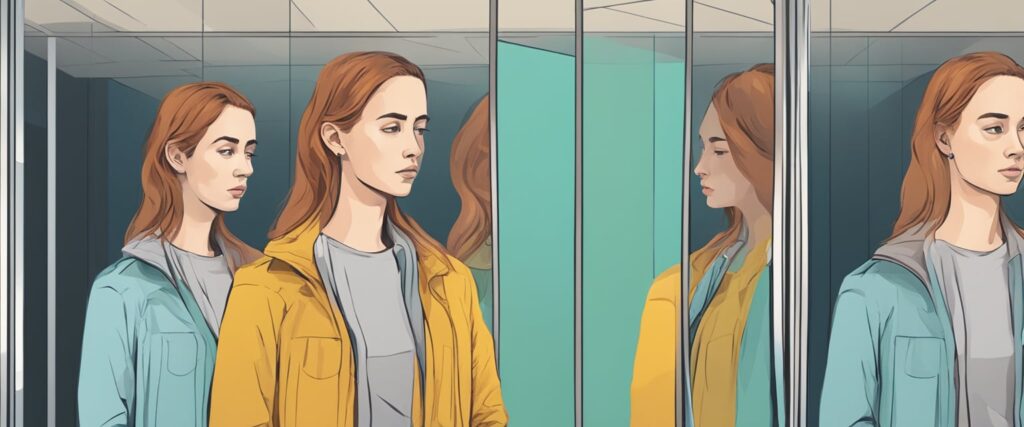Dissociative Disorders: A Deep Dive into Understanding and Seeking Help

Dissociative disorders are complex mental health conditions that can significantly disrupt an individual’s life. Often misunderstood, these disorders are not merely fictional portrayals of “multiple personalities” seen in movies. Instead, they represent a serious disconnection between a person’s thoughts, identity, consciousness, and memory. While dissociative disorders affect millions of people globally, many individuals struggle to recognize the symptoms and seek the help they need. Pop culture has ingrained into society that these are dangerous people. People with dissociative disorders should be avoided and not disturbed. Yet, more than 3 million people in the U.S. and 150 million worldwide experience dissociative disorders.
What Are Dissociative Disorders?
Dissociative disorders are characterized by a disruption in the normal integration of consciousness, memory, identity, and perception. These disruptions often stem from severe trauma, particularly during childhood, where the mind develops dissociative symptoms as a way to cope with overwhelming experiences.
Common symptoms include memory loss, identity confusion, feeling detached from oneself or the surroundings, and unexplained changes in behavior. These symptoms can interfere with daily life, making it difficult for individuals to function normally at work, school, or in relationships.
Types of Dissociative Disorders
Understanding the different types of dissociative disorders is crucial in recognizing the signs and knowing when to seek help:
1. Dissociative Identity Disorder (DID)
DID involves the presence of two or more distinct identities within an individual, each with its own behavior patterns, memories, and characteristics. These identities may emerge during different life stages, especially those associated with trauma.
2. Dissociative Amnesia
Dissociative amnesia involves significant memory loss related to traumatic events, unlike general amnesia caused by brain injury. Individuals may forget important personal information or entire periods of their lives, usually those tied to emotional or physical trauma.
3. Depersonalization-Derealization Disorder
This disorder is marked by persistent or recurring feelings of detachment from one’s own body or mind (depersonalization) and/or a sense of unreality about the surroundings (derealization). Individuals often feel as though they are watching their lives from outside their bodies, leading to significant distress.
4. Other Specified Dissociative Disorders (OSDD)
OSDD applies to individuals who experience significant dissociative symptoms that don’t fully match the criteria for other dissociative disorders but still cause distress and impair daily functioning.
Recognizing the Signs and When to Seek Help
Recognizing the signs of dissociative disorders is the first step toward seeking help. Common indicators include:
- Frequent gaps in memory, particularly related to traumatic events
- Identity confusion or a sense of having multiple identities
- Feeling detached from reality, as if watching oneself from outside the body
- Unexplained changes in behavior, attitude, or emotional state
- Difficulty functioning in daily activities and maintaining relationships
If you or someone you know is experiencing these symptoms, it’s crucial to seek professional help. Here’s how you can take action:
Action Steps for Getting Help
1. Acknowledge the Need for Help
Recognizing that you or someone close to you may need help is the first and most critical step. Dissociative disorders are often misunderstood and misdiagnosed, and it’s easy to dismiss symptoms as something else. However, early intervention can prevent the condition from worsening.
2. Start with a Trusted Professional
If you’re unsure where to begin, start by consulting with a trusted healthcare provider, such as your primary care physician or a general practitioner. They can provide an initial assessment and refer you to a mental health specialist, such as a psychologist or psychiatrist, who has experience with dissociative disorders.
3. Seek a Specialist in Dissociative Disorders
Not all mental health professionals have expertise in dissociative disorders. Look for a therapist or psychiatrist who specializes in trauma and dissociative conditions. Organizations like the International Society for the Study of Trauma and Dissociation (ISSTD) can help you find a qualified professional in your area.
4. Explore Different Treatment Options
Treatment for dissociative disorders often involves a combination of psychotherapy and, in some cases, medication. Common therapeutic approaches include:
- Trauma-Focused Therapy: Helps individuals process and integrate traumatic memories in a safe and controlled environment.
- Cognitive Behavioral Therapy (CBT): Aims to change negative thought patterns and behaviors.
- Dialectical Behavior Therapy (DBT): Combines cognitive behavioral techniques with mindfulness strategies.
If you’re exploring treatment options, ask about the specific types of therapy that would be most effective for your condition. Understanding these options will help you make informed decisions about your care.
5. Consider the Level of Care You Need
Depending on the severity of your symptoms, different levels of care might be appropriate:
- Inpatient Program: For severe cases where constant supervision and intensive therapy are necessary.
- Intensive Outpatient Program (IOP): Ideal for individuals who need structured therapy while still being able to manage their daily responsibilities.
- Partial Hospitalization Program (PHP): Provides intensive therapy during the day, with the ability to return home in the evenings.
Discuss these options with your healthcare provider to determine the best fit for your needs.
6. Join a Support Group
Connecting with others who understand what you’re going through can be incredibly beneficial. Look for local or online support groups for individuals with dissociative disorders. These groups offer a safe space to share experiences, gain insights, and receive support from others facing similar challenges.
7. Educate Yourself and Your Support System
Understanding dissociative disorders can reduce fear and stigma. Educate yourself about your condition and share reliable information with your support system. This will help them understand what you’re going through and how they can best support you.
8. Create a Crisis Plan
It’s important to have a plan in place in case you experience severe distress or suicidal thoughts. Work with your therapist to develop a crisis plan, which might include emergency contacts, coping strategies, and a list of safe spaces you can go to during a crisis.
Taking the Next Steps
Living with a dissociative disorder can be overwhelming, but with the right support and treatment, it’s possible to lead a fulfilling and meaningful life. The first step is acknowledging the need for help and reaching out to a professional who can guide you through the process.
If you or someone you know is struggling with a dissociative disorder, don’t hesitate to seek help. Visit mental health organizations like the National Alliance on Mental Illness (NAMI) or the International Society for the Study of Trauma and Dissociation (ISSTD) for resources, treatment options, and support groups. Taking action today can lead to a healthier and more empowered tomorrow.

